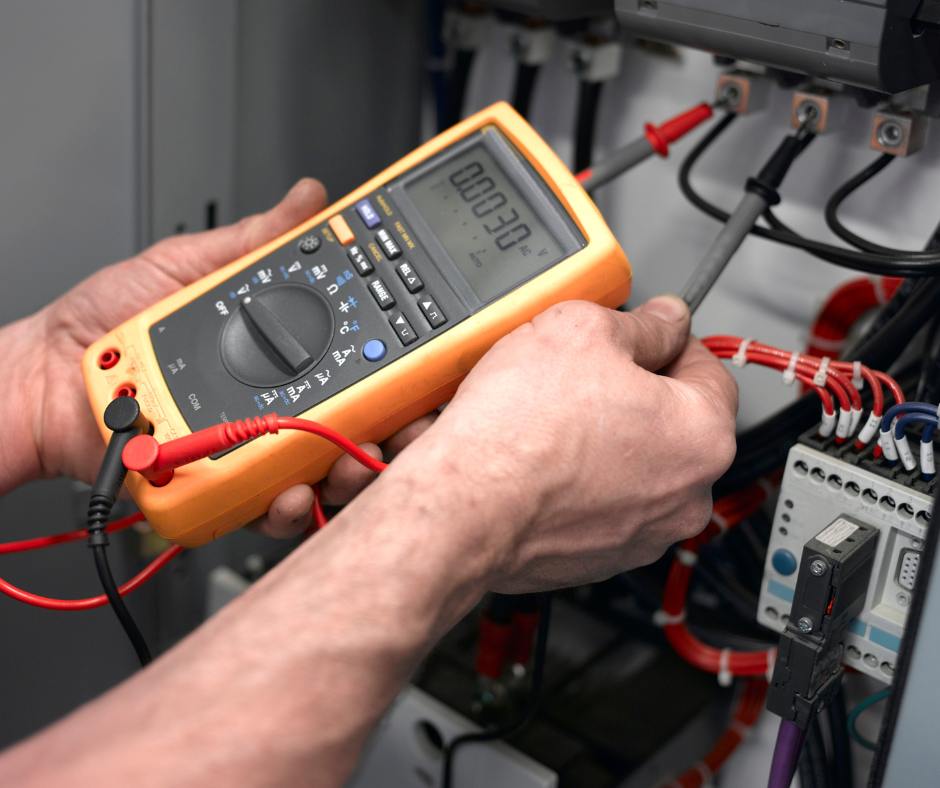PAT testing is essential in ensuring the continued safety of the electrical appliances in your workplace.
While PAT testing is not technically a legal requirement, making sure your electrical appliances are safe is – keep reading to learn more.
What is PAT testing?
 Portable Appliance Testing or PAT testing is a routine combined inspection and test that checks for electrical defects in appliances and equipment such as Class I (earthed) and Class II (double insulated) electrical equipment.
Portable Appliance Testing or PAT testing is a routine combined inspection and test that checks for electrical defects in appliances and equipment such as Class I (earthed) and Class II (double insulated) electrical equipment.
The completion of a PAT test does not absolve the user from conducting their own inspection in cases of:
- construction equipment
- light industrial
- handheld class II equipment
- class I equipment and cables
- leads and plugs connected to class I equipment
Whilst there is no legal requirement to keep PAT testing records, the HSE recommends employers keep records till the end of the appliance/equipment’s lifecycle.
Records of PAT testing can also serve as evidence of regular inspections, where employers may wish to keep these records as historical proof of compliance with the Provision and Use of Work Equipment Regulations 1998 (PUWER).
How often should a PAT test be done?
 Whilst there are no specific legal intervals for PAT testing, the Health and Safety Executive (HSE) has set guidance based on the risk level of the equipment and the environment of use.
Whilst there are no specific legal intervals for PAT testing, the Health and Safety Executive (HSE) has set guidance based on the risk level of the equipment and the environment of use.
Ultimately the duty holder has responsibility to assess the conditions that may cause and increase the likelihood of equipment damage and deterioration.
For construction work equipment, which often experiences heavy use whilst exposed to harsh conditions, more frequent testing is necessary than compared with low-risk environments such as offices.
According to the HSE guidelines, the frequency of PAT testing of construction equipment is as follows:
- 110V Equipment – Before first use on site then 3-monthly
- 230V Equipment – Before first use on site then monthly
- Fixed RCDs – Before first use on site, then 3-monthly
- Portable RCDs – Before first use on site, then monthly
- Equipment in site offices – Before first use on site, then yearly
Whilst most construction equipment tends to be obvious, questions are always raised over the frequency of testing battery chargers.
Where battery chargers are only used in the site offices, they may only need to be PAT tested yearly, whereas when used on a site or in high-hazard areas they may be PAT tested 3-monthly.
Whilst above are all common practices, the exact frequency can be dependent on:
- Manufacturer’s guidance
- Site Rules/Requirements
- Risk Assessments
Over time and with consistent preventative maintenance, intervals can be extended if few faults are found. However, if faults are frequent or preventative maintenance is inconsistent, intervals may need to be reduced.
Who should carry out PAT testing?
 Whilst PAT testing doesn’t require an electricians qualification, it does require appropriate training. The level of training is dependent on the complexity of the equipment and work environment of use. For example:
Whilst PAT testing doesn’t require an electricians qualification, it does require appropriate training. The level of training is dependent on the complexity of the equipment and work environment of use. For example:
Basic PAT Testers, whom perform tests on low-risk equipment may only need a short, practical course.
This course will normally cover inspection techniques, use of PAT testing devices and an understanding of the IET code of practice.
Advanced PAT testers are typically responsible for more complex or high-risk equipment (e.g. construction sites or industrial settings).
They will need a deeper understanding of electrical systems, insulation testing and interpretation of data.
In these cases, training will include more detailed instruction and advanced fault diagnosis.
The IET Code of Practice for in-service inspection and testing of electrical equipment provides clear guidelines on who can conduct PAT testing how a person can be considered competent.
According to the standard, a competent person is a person who has:
- Sufficient knowledge of the electrical equipment to be tested
- Practical experience in conducting combined inspections and tests
- An understanding of the potential hazards involved
- Familiarity with the test instruments involved in PAT testing
- Training in use of PAT testing equipment
Being considered as a competent person is not about having access to the right tools, but an understanding of what the tests are for and an ability to interpret the results accurately.
How can WA Management help?
WA Management offer an Electrical Safety online training course which provides learners with an awareness of working around electricity safely.

Electrical Safety and Fire Safety training courses are essential tools in preventing fires in the workplace. Make sure you don’t miss out on our 10% off deal on these courses, available until the end of September. Simply enter the code ‘fire10’ at checkout to save!
Read more Consultant’s blogs here.
To keep up to date with the latest health & safety news and advice, follow us on social media:
